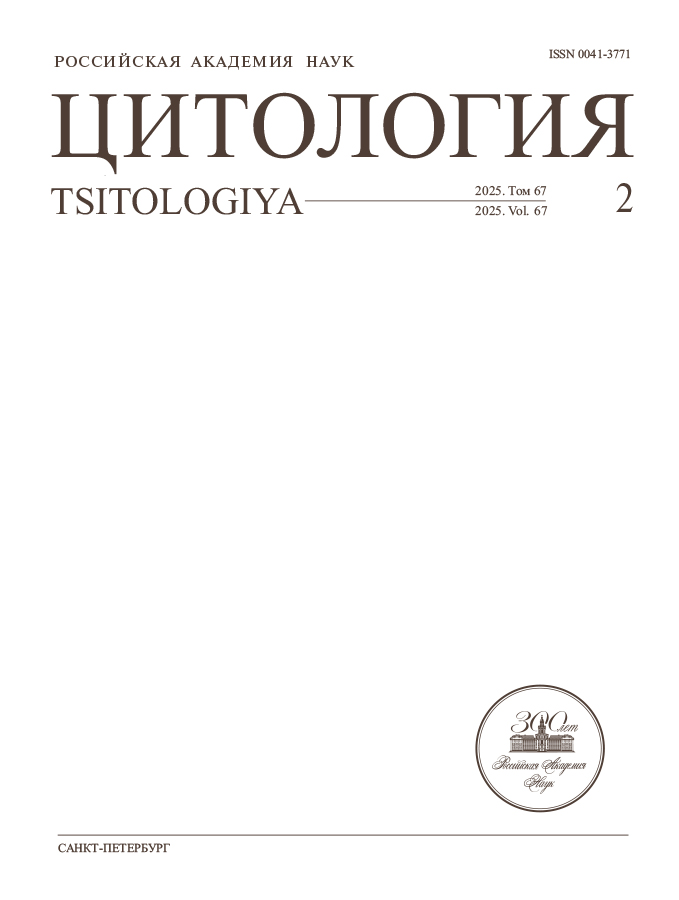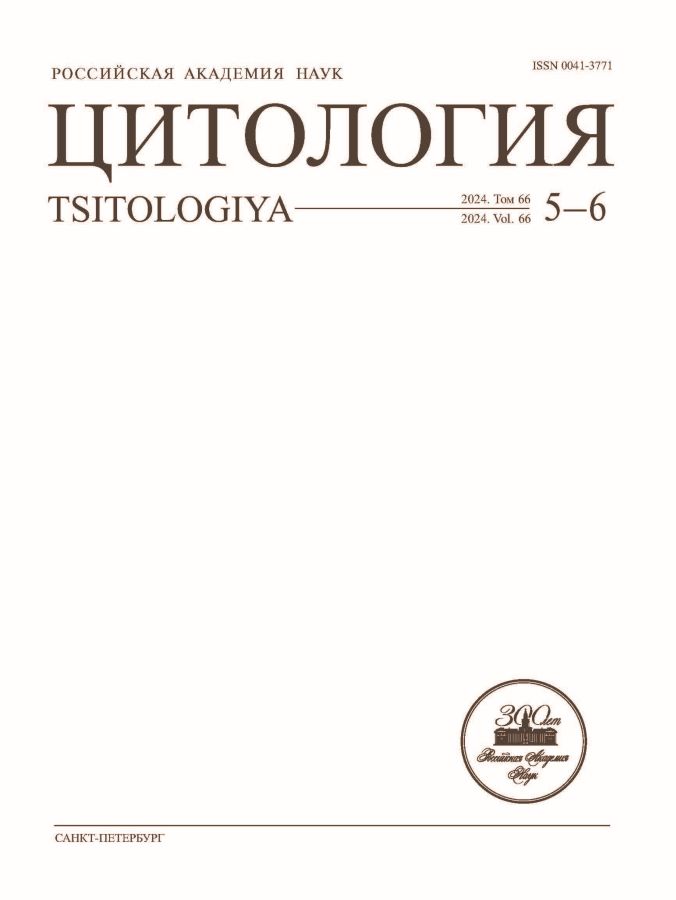Opportunistic bacteria Serratia proteamaculans regulate the intensity of their invasion by increasing the expression of host cell surface receptors
- Authors: Tsaplina O.A.1
-
Affiliations:
- Institute of Cytology of the Russian Academy of Sciences
- Issue: Vol 66, No 5-6 (2024)
- Pages: 482-490
- Section: Articles
- URL: https://ter-arkhiv.ru/0041-3771/article/view/677471
- DOI: https://doi.org/10.31857/S0041377124050088
- EDN: https://elibrary.ru/DUJQAR
- ID: 677471
Cite item
Abstract
The Serratia proteamaculans are able to penetrate eukaryotic cells. One of the virulence factors of these bacteria is the bacterial surface protein OmpX. The OmpX protein increases the adhesion of bacteria to the surface of eukaryotic cells. In addition, this protein increases the gene expression of the EGF receptor and β1 integrin, which determine the intensity of S. proteamaculans invasion. We show that OmpX also increases the expression of E-cadherin, which is involved in S. proteamaculans invasion. The objective of this work was to compare the effect of bacteria at different growth stages on the gene expression of receptors in carcinoma cells, which normally synthesize different numbers of receptors involved in invasion. Bacteria were used after 24 hours of growth, when they had not yet synthesized the OmpX-cleaving protease protealysin, and after 48 hours of growth, when active protealysin was detected in bacterial extracts. After 24 and 48 hours of growth, the bacteria induce an increase in the gene expression of EGF receptor, E-cadherin, β1 and α5 integrins in M-HeLa cervical carcinoma cells, A549 lung carcinoma cells, Caco-2 colon adenocarcinoma cells, and DF-2 skin fibroblasts. The intensity of the increase in receptor expression depends on the properties of the cell line and the growth stage of the bacteria. Moreover, infection with S. proteamaculans causes a similar increase in the expression of only the EGF receptor and β1 integrin. Using quantitative invasion, it was shown that the intensity of bacterial invasion, depending on the growth stage of the bacterial culture, correlates with the dynamics of increased gene expression of the EGF receptor and β1 integrin. When analyzing the number of receptors, it was shown that an increase in the gene expression of the EGF receptor and β1 integrin in cells may be necessary to replenish the pool of receptors that move from the membrane into the cytoplasm of the host cell during infection. Thus, as a result of contact of the bacterial surface protein OmpX with the surface of a human cell, receptors involved in S. proteamaculans invasion accumulate. Moreover, it is the increase in the gene expression of the EGF receptor and β1-integrin that determines the sensitivity of infected cells to S. proteamaculans.
Full Text
About the authors
O. A. Tsaplina
Institute of Cytology of the Russian Academy of Sciences
Author for correspondence.
Email: olga566@mail.ru
Russian Federation, Saint Petersburg, 194064
References
- Цаплина О. 2018. Участие поверхностного белка Serratia proteamaculans OmpX в адгезии бактерий к клеткам эукариот. Цитология. Т. 60. № 10. С. 817. (Tsaplina O. 2018. Participation of Serratia proteamaculans ompX in bacterial adhesion on eukaryotic cells. Tsitologiia. V. 60. No. 10. P. 817.)
- Berson Y., Khaitlina S., Tsaplina O. 2023. Involvement of lipid rafts in the invasion of opportunistic bacteria Serratia into Eukaryotic Cells. Int J. Mol. Sci. V. 24. P. 9029.
- Bollet C., Grimont P., Gainnier M., Geissler A., Sainty J. M., De Micco P. 1993. Fatal pneumonia due to Serratia proteamaculans subsp. quinovora. J. Clin. Microbiol. V. 31. P. 444.
- Bozhokina E. S., Tsaplina O. A., Efremova T. N., Kever L. V., Demidyuk I. V., Kostrov S. V., Adam T., Komissarchik Y. Y., Khaitlina S. Y. 2011. Bacterial invasion of eukaryotic cells can be mediated by actin-hydrolysing metalloproteases grimelysin and protealysin. Cell Biology International. V. 35. P. 111–118.
- Dingemans A. M., van den Boogaart V., Vosse B.A., van Suylen R. J., Griffioen A. W., Thijssen V. L. 2010. Integrin expression profiling identifies integrin alpha5 and beta1 as prognostic factors in early stage non-small cell lung cancer. Mol. Cancer. V. 9. P. 152.
- Hejazi A., Falkiner F. R. 1997. Serratia marcescens. J Med Microbiol. V. 46. P. 903–912.
- Hertle R. 2005. The family of Serratia type pore forming toxins. Curr Protein Pept Sci. V. 6. P. 313–325.
- Hu Q. P., Kuang J. Y., Yang Q. K., Bian X. W., Yu S. C. 2016. Beyond a tumor suppressor: Soluble E-cadherin promotes the progression of cancer. Int. J. Cancer. V. 138. P. 2804–2812.
- Joh D., Wann E. R., Kreikemeyer B., Speziale P., Hook M. 1999. Role of fibronectin-binding MSCRAMMs in bacterial adherence and entry into mammalian cells. Matrix Biol. V. 18. P. 211.
- Mahlen S. D. 2011. Serratia infections: from military experiments to current practice. Clin. Microbiol. Rev. V. 24. P. 755.
- Morello V., Cabodi S., Sigismund S., Camacho-Leal M. P., Repetto D., Volante M., Papotti M., Turco E., Defilippi P. 2011. Beta 1 integrin controls EGFR signaling and tumorigenic properties of lung cancer cells. Oncogene. V. 30. P. 4087.
- Nguyen K. S., Kobayashi S., Costa D. B. 2009. Acquired resistance to epidermal growth factor receptor tyrosine kinase inhibitors in non-small-cell lung cancers dependent on the epidermal growth factor receptor pathway. Clin. Lung Cancer. V. 10. P. 281.
- Paredes J., Figueiredo J., Albergaria A., Oliveira P., Carvalho J., Ribeiro A. S., Caldeira J., Costa A. M., Simoes-Correia J., Oliveira M. J., Pinheiro H., Pinho S. S., Mateus R., Reis C. A., Leite M., Fernandes M. S., Schmitt F., Carneiro F., Figueiredo C., Oliveira C., Seruca R. 2012. Epithelial E- and P-cadherins: role and clinical significance in cancer. Biochim. Biophys. Acta. V. 1826. P. 297.
- Pece S., Gutkind J. S. 2000. Signaling from E-cadherins to the MAPK pathway by the recruitment and activation of epidermal growth factor receptors upon cell-cell contact formation. J. Biol. Chem. V. 275. P. 41227.
- Qian X., Karpova T., Sheppard A. M., McNally J., Lowy D. R. 2004. E-cadherin-mediated adhesion inhibits ligand-dependent activation of diverse receptor tyrosine kinases. EMBO J. V. 23. P. 1739.
- Takahashi K., Suzuki K. 1996. Density-dependent inhibition of growth involves prevention of EGF receptor activation by E-cadherin-mediated cell-cell adhesion. Exp. Cell. Res. V. 226. P. 214
- Tsang T. M., Felek S., Krukonis E. S. 2010. Ail binding to fibronectin facilitates Yersinia pestis binding to host cells and Yop delivery. Infect. Immun. V. 78. P. 3358.
- Tsaplina O., Bozhokina E. 2021. Bacterial outer membrane protein OmpX regulates beta1 integrin and epidermal growth factor receptor (EGFR) involved in invasion of M-HeLa cells by Serratia proteamaculans. Int. J. Mol. Sci. V. 22. P. 13246.
- Tsaplina O., Demidyuk I., Artamonova T., Khodorkovsky M., Khaitlina S. 2020. Cleavage of the outer membrane protein OmpX by protealysin regulates Serratia proteamaculans invasion. FEBS Lett. V. 594. P. 3095.
- Tsaplina O., Lomert E., Berson Y. 2023. Host-cell-dependent roles of e-cadherin in Serratia Invasion. Int. J. Mol. Sci. V. 24. P. 17075.
- Tsaplina O. A. 2020. Redistribution of EGF receptor and α5, β1 integrins in response to infection of epithelial cells by Serratia proteamaculans. Cell and Tissue Biology. V. 14. P. 440.
- Tsaplina O. A., Efremova T. N., Kever L. V., Komissarchik Y. Y., Demidyuk I. V., Kostrov S. V., Khaitlina S. Y. 2009. Probing for actinase activity of protealysin. Biochemistry (Moscow). V. 74. P. 648.
- Ursua P. R., Unzaga M. J., Melero P., Iturburu I., Ezpeleta C., Cisterna R. 1996. Serratia rubidaea as an invasive pathogen. J. Clin. Microbiol. V. 34. P. 216.
- Wiedemann A., Mijouin L., Ayoub M. A., Barilleau E., Canepa S., Teixeira-Gomes A. P., Le Vern Y., Rosselin M., Reiter E., Velge P. 2016. Identification of the epidermal growth factor receptor as the receptor for Salmonella Rck-dependent invasion. FASEB J. V. 30. P. 4180.
- Yoshida T., Zhang G., Haura E. B. 2010. Targeting epidermal growth factor receptor: central signaling kinase in lung cancer. Biochem. Pharmacol. V. 80. P. 613.
Supplementary files















